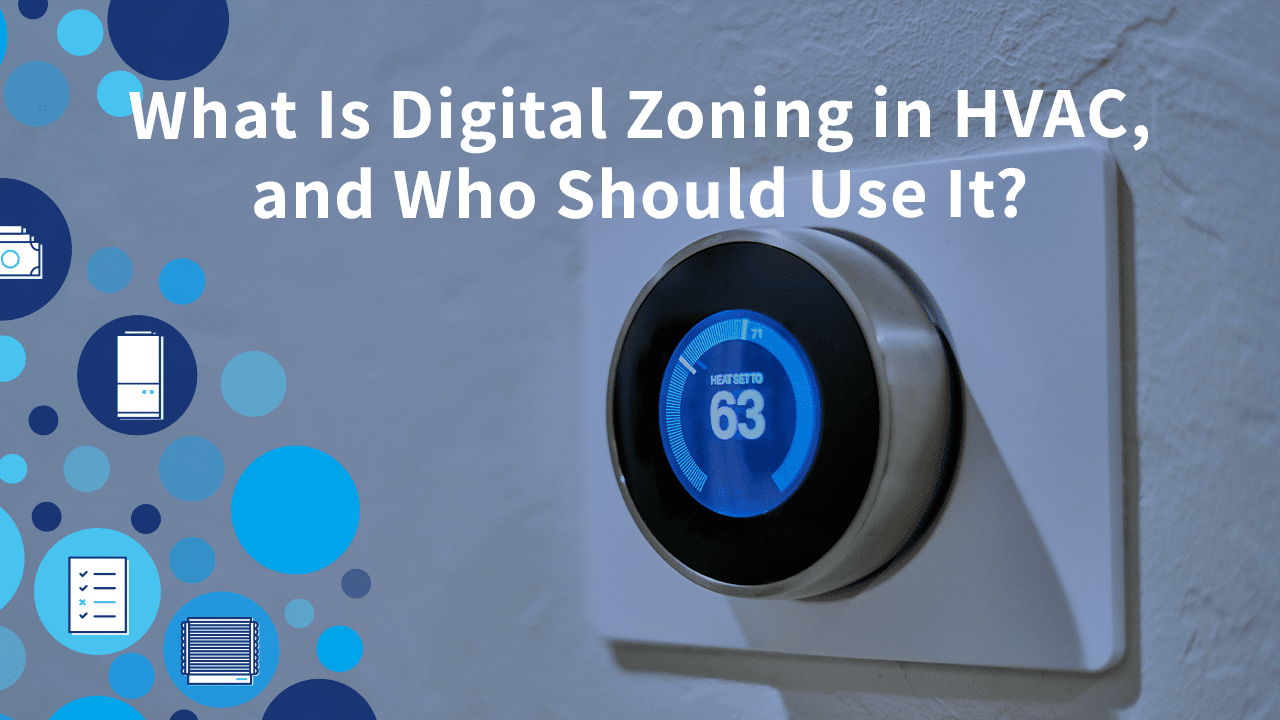Most HVAC systems are controlled by a single thermostat, often centrally located to regulate the heating and cooling of an entire property based on the temperature in one spot. As practically any property owner knows, however, few buildings maintain constant temperatures throughout all areas, leaving some rooms warmer than the thermostat settings, while other areas remain colder. Traditionally, a variety of largely inefficient methods have been employed in attempts to create more consistent temperatures and improve HVAC efficiency. However, few are as effective as digital zoning.
HVAC Zoning Defined
With HVAC zoning, property owners can provide varying levels of heating and cooling to different zoned areas of a building. Not only does zoning promote HVAC efficiency by reducing output to empty rooms, but it allows occupants to increase comfort by customizing the temperature in their specific spaces. HVAC zoning technology is ideal for buildings with multiple stories, high ceilings, large windows, and uneven sun exposure, as well as buildings with unoccupied areas. In fact, HVAC zoning can reduce energy costs by as much as 40%, paying for itself within 5 years.
How does HVAC zoning work? First, a building is broken into different areas, and the heating and cooling for each is controlled by a thermostat. Electronically controlled dampers are paired with each thermostat to control the airflow through the building’s ductwork. Each thermostat then separately controls the airflow through its assigned ducts. HVAC technicians even can install zoning technology into many existing systems by installing a zone control panel that connects multiple thermostats, as well as placing zoning dampers inside existing ductwork.
Digital Zoning in HVAC
Improving upon zoning technology for HVAC, digital zoning, also known as smart zoning, modernizes the concept. Instead of dividing a building into a few zones based on a property’s floors, smart zoning lets property owners transform each room into an independently controlled zone. By identifying specific rooms that aren’t occupied or that have temperature imbalances, HVAC systems can use even less energy.
Digital zoning employs connected devices that can improve efficiency the more they are used. Likewise, smart vents are better able to moderate the levels of airflow compared to being either entirely open or completely closed. Thanks to smart HVAC zoning technology, users can better control the temperature in each room of a building, conserving more energy and increasing comfort for all occupants.
Many digital zoning systems are easy to install, and some even can be self-installed, which saves property owners even more cash compared to hiring a contractor to handle the installation. Some smart zoning technology even can be added on a room-by-room basis for less than $1,000 in certain households.
Is Digital HVAC Zoning Right for You?
Is digital HVAC zoning right for you? If you desire greater control over the airflow throughout your property, thereby reducing your energy bills and enhancing occupants’ comfort, then digital zoning is an HVAC solution you should consider.
Thinking of installing digital HVAC zoning, but unsure if it’s the right choice for your property? Consider the following factors:
- Do you want to save money by reducing your energy bills by as much as 40%?
- Are you interested in improving your energy efficiency by not heating and cooling unused rooms unnecessarily?
- Do you want the convenience of adjusting the temperature in individual rooms?
- Do you hope to enhance the comfort of all occupants by allowing them to enjoy their preferred temperatures?
- Can you benefit from a longer HVAC lifespan and lower maintenance costs by reducing the system’s running cycles?
Of course, like with most other property investments, there are disadvantages to consider. Most property owners will need to pay upfront costs to install digital zoning or to retrofit their existing HVAC systems. Increasing the number of system components also can make it more challenging to diagnose problems, while at the same time increasing possible points of failure. Existing systems also might require upgrades to support digital zoning technology due to capacity limitations.
Regardless of initial costs and complexities, many property owners are opting to upgrade their HVAC systems to employ digital zoning since the benefits outweigh the potential drawbacks. In fact, HVAC zoning is so effective that some states now require these specialized controls in certain new constructions.












